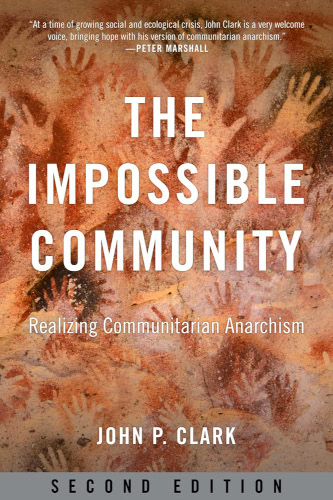This academic yet accessible book addresses the myth that revolutionary, liberatory social transformation is no longer possible under capitalism, and also the notion that the tension between individualist and collectivist anarchism somehow makes anarchism itself impossible.
Clark demonstrates that contemporary capitalism has created an environment where, as Frederic Jameson famously said, it is ‘easier to imagine the end of the world, than the end of capitalism’.
But, like the English anarchist Colin Ward, he uses real world grassroots social movements – from the Sarvodaya Shramadana Movement in Sri Lanka, to the global Occupy movement – to show that people already organise using anarchist principles.
Clark reminds us that there is a ‘long tradition of libertarian communism, which is the form of organisation taken by communities of solidarity and liberation. It has been practiced in indigenous societies, in intentional communities... in the self-managed collectives during the Spanish Revolution, in affinity groups, in base communities, and in families. It has often worked quite well.’
In his hometown of New Orleans, during the aftermath of Hurricane Katrina in 2005, Clark witnessed this kind of grassroots organising first hand: ‘The Katrina disaster was the most devastating experience I have lived through, but also the most uplifting one. Post-Katrina New Orleans was a horrifying, heartbreaking and post-apocalyptic world in many ways. But the communities of compassion and solidarity that developed in the wake of the disaster were the closest thing to my social ideal that I have ever experienced.’
Clark calls this form of social organisation ‘communitarian’, a term he finds crucial because he takes ‘the key step in personal and social transformation to be at the level of the person-in-community and each person’s moment-to-moment practice within that community. We show that another world is possible by making another world actual.’
Each lived illustration of communitarian anarchism stands as testimony to the possibility of freedom.
Revisiting anarchist luminaries such as Gustav Landauer, Élisée Reclus and Peter Kropotkin, as well as drawing on Georg Wilhelm Friedrich Hegel and Karl Marx, Clark presents us with a convincing framework for change, consisting of a ‘diverse, multidimensional’ movement towards communitarian anarchism.
Clark presents us with possibility that there is still a chance to build a peaceable and just world for all.


